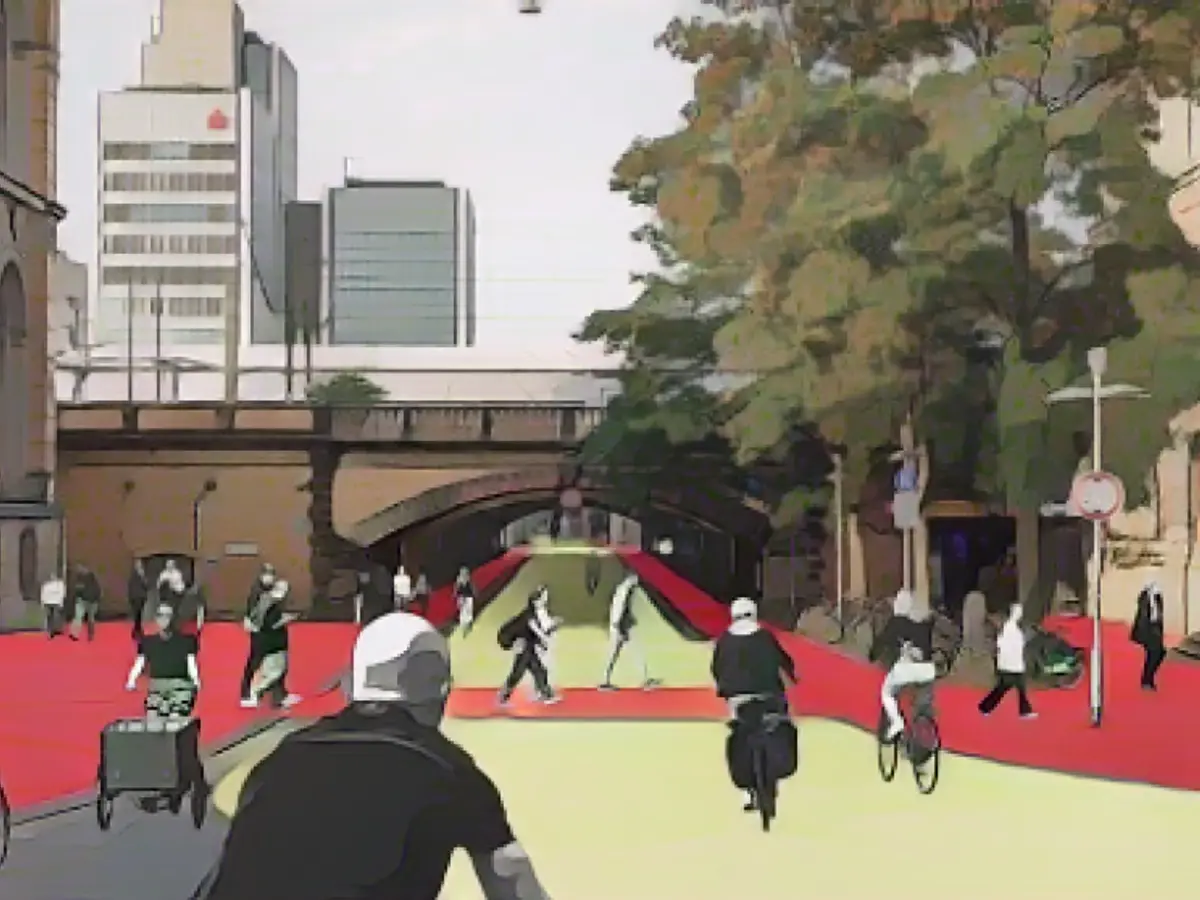"Getting Around Hanover's City Center: A Balancing Act"
The bustling heart of Hanover is undergoing a transformation. Proposed changes, like expanded bike lanes and pedestrian zones, aim to make the city center more inviting for cyclists and pedestrians, sparking lively debate and raising concerns about the impact on local businesses. The Chamber of Industry and Commerce, numerous other associations, and influential figures such as Maike Bielfeldt, IHK Managing Director, are pushing back, advocating for the city center's accessibility.
The Business Community weighs in
The business community has rallied together, releasing a position paper that outlines their interest in preserving the city center's accessibility. They address ten major concerns:
► City Ring and Parking Garages: The City Ring—a circulating ring of pedestrian-friendly roads—should not be congested. The Chamber of Commerce's Managing Director, Karin Schindler-Abbes, emphasizes the importance of maintained inner-city retail accessibility, demanding expanded City Ring and more accessible parking garages.
► Traffic Management: Public transport flow should be optimized on major roads. The parking guidance system should be modernized for more efficient traffic management.
► Business and Delivery Traffic: Commercial traffic constitutes around 40% of inner-city traffic. Loading zones and parking areas tailored for tradespeople still need to be improved.
► Visitor Experience: All city center visitors should feel welcome—by any mode of transportation. A smooth journey is essential for everyone, including hotel and restaurant guests and disabled individuals.
► Parking Spaces: Roadside parking should remain, in part due to its role in revenue generation for the city.
► Public Transport: Before individual traffic restrictions, consider expanding public transport capacity to handle peak-time demand.
► P&R (Park and Ride): Expand P&R options before eliminating parking spaces in the city center.
► E-Mobility: The number of electric vehicle charging stations should be expanded.
► Construction Site Coordination: Coordinate road closures and construction sites to prevent further chaos during restrictions.
► Building Refurbishment: Refurbish existing buildings in the city center to accommodate current vehicles while allowing tradespeople to park during work hours.
A diverse coalition of businesses and construction associations has spoken up, urging the city to consider these demands before implementing transportation changes. In the future, they are eager to collaborate with city officials to find feasible solutions that strike a balance between enhanced mobility and city center accessibility.
Balancing act
The challenge lies in adapting Hanover's mobility concept to meet the demands of the business community while also promoting cyclist and pedestrian-friendly areas. By following a strategic balance of urban planning, public transportation enhancements, traffic management, and smart infrastructure solutions, Hanover can preserve the city center's accessibility while turning it into a vibrant, sustainable space that cultivates a harmonious environment for commuters, shoppers, and everyone in between.
As Hanover works to ensure the city center remains welcoming and easily navigable, consider the following strategies:
- Integrated Urban Planning:
- Expand the City Ring: Introduce more pedestrian-friendly zones to the city center, enhancing accessibility and creating a more engaging pedestrian and cyclist environment.
- Public Transport Improvements:
- Enhanced Public Transport Network: Improve public transport options like buses, trams, or bike-share systems. Expand routes, increase frequency, and ensure seamless integration with existing transportation systems.
- Smart Traffic Management:
- Optimize Traffic Flow: Implement smart traffic management systems to manage traffic and mitigate congestion. Utilize real-time information and data to coordinate traffic signals, allocate lanes, and update drivers during disruptions.
- Protected Infrastructure:
- Secure Cycling Lanes: Create designated spaces for cyclists, such as protected cycletracks, separate from vehicle traffic.
- Wide, Accessible Pedestrian Space: Ensure that sidewalks are spacious and well-maintained, complete with ample room for pedestrians, clear signage, and easy crossings.
- Business-Friendly Solutions:
- Flexible Parking Options: Offer flexible parking solutions, such as designated areas or paid parking zones for business owners, to keep commercial traffic flowing while maintaining accessibility.
- Public Consultation:
- Engage with the Community: Hold public consultations to gather input and understand the diverse needs of the city center’s businesses, residents, and visitors.
- Sustainable Urban Design:
- Green Spaces: Introduce green spaces and public squares to serve as community hubs, incorporating seating, art installations, and other activities that enhance the overall appeal of the city center.
By blending these methods, Hanover can construct a adaptive mobility concept that nurtures business growth while promoting a pedestrian- and cyclist-friendly city center.




